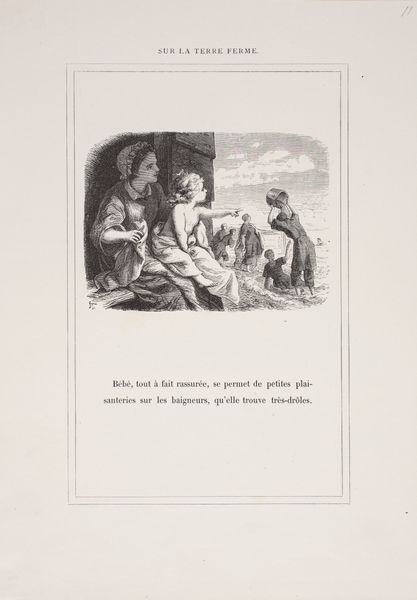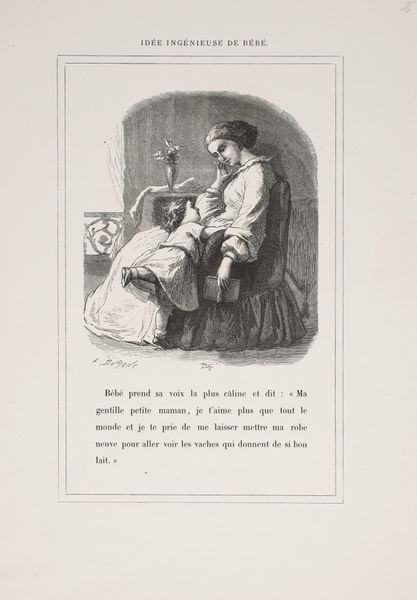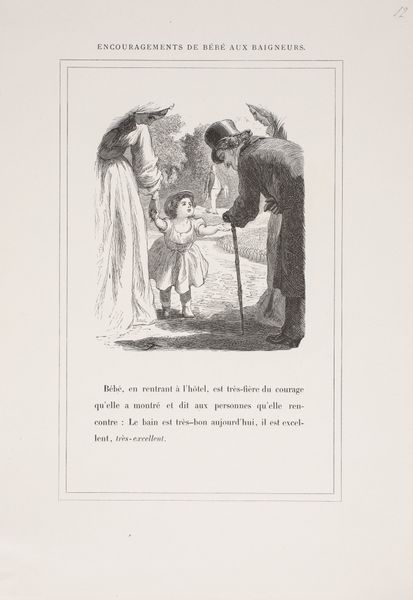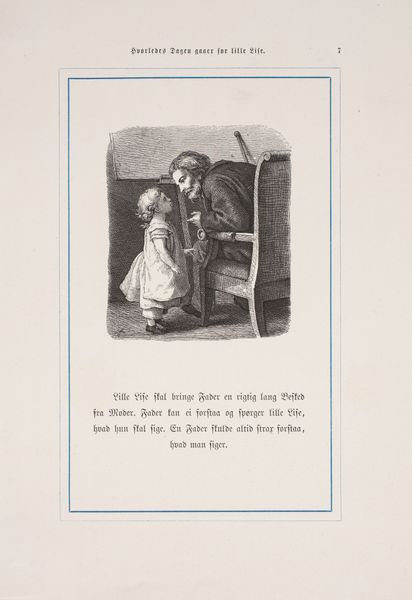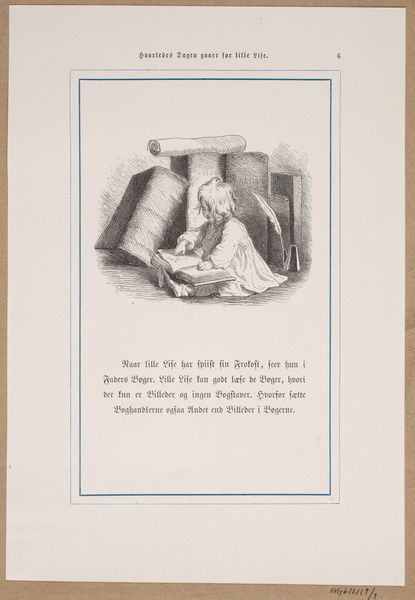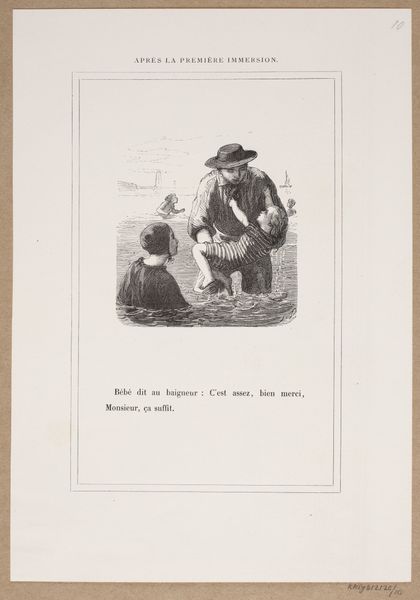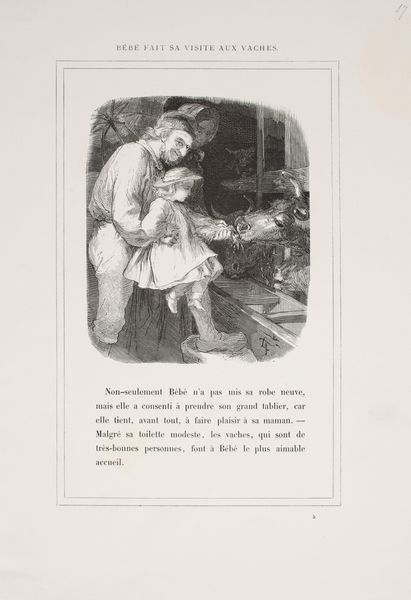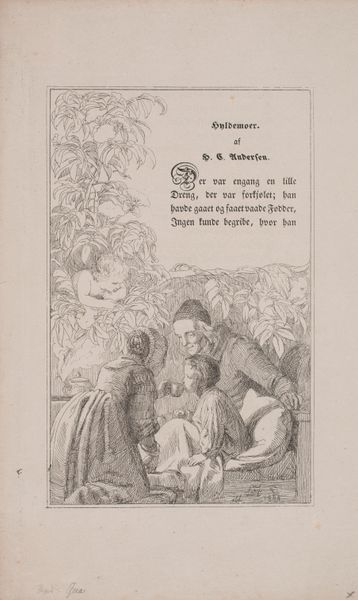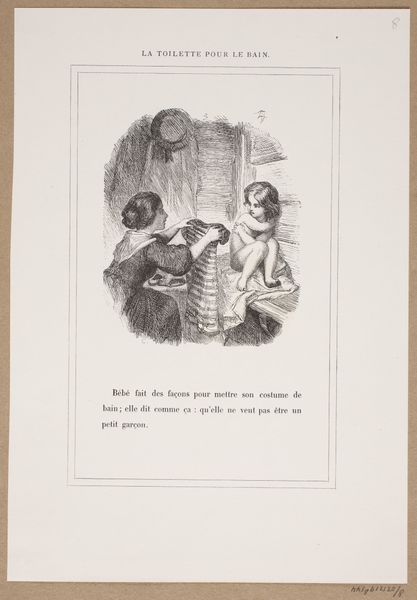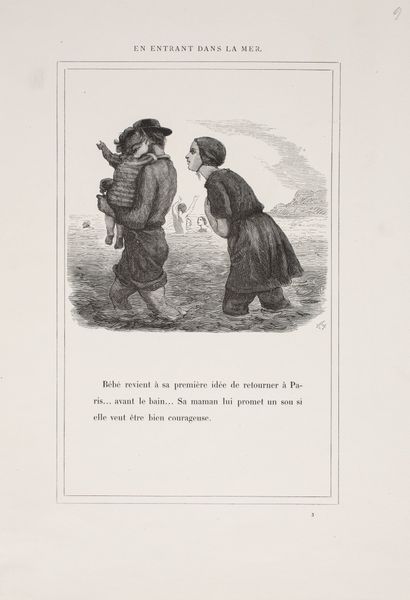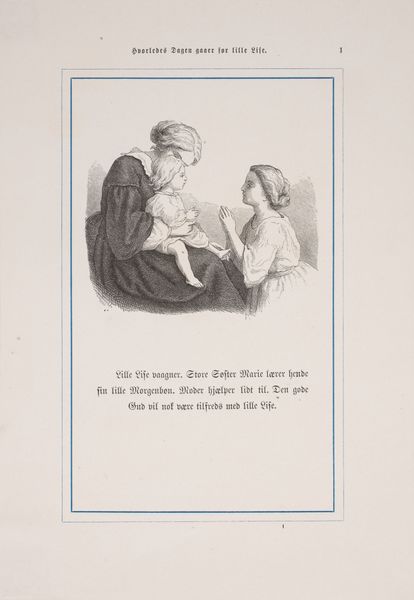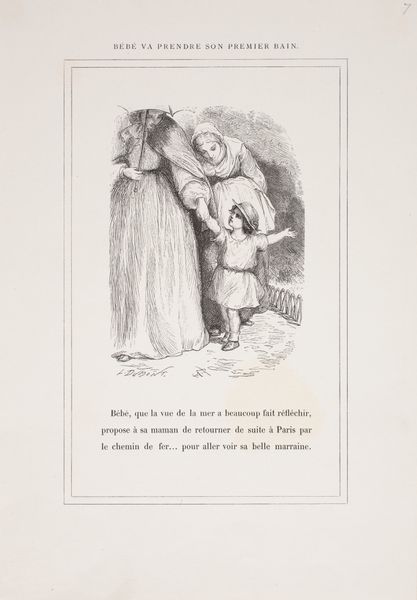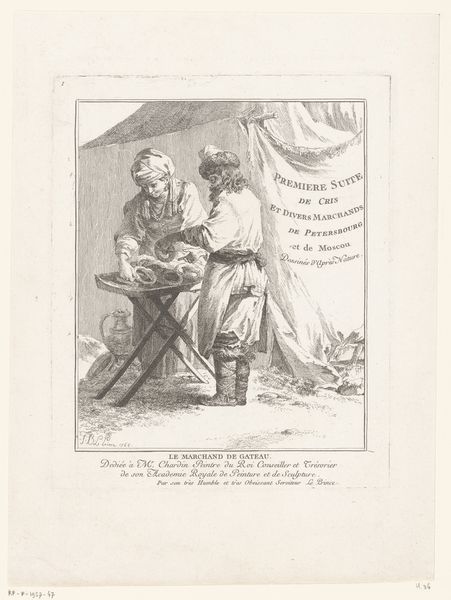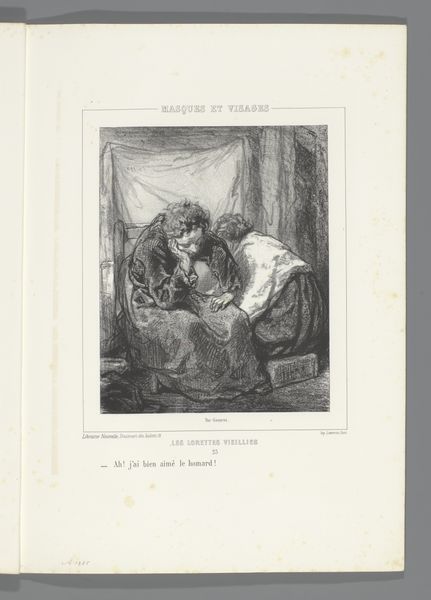
Dimensions: 275 mm (height) x 190 mm (width) (bladmaal)
Editor: This is “En chemin de fer,” or "On the Railway," a woodcut and graphite drawing by Lorenz Frølich, dating to 1863. The image, depicting a mother and child on a train, has a lovely tenderness about it, though the lighting hints at a certain darkness ahead. What can you tell me about the cultural context of this work? Curator: It’s interesting how you perceive tenderness and darkness. Consider the burgeoning railway system of 1860s Europe. Railways symbolized progress and modernity, but also anxieties. The speed, the tunnels, the sheer scale – these things unsettled many. Do you notice anything in the body language of the figures that speaks to those anxieties? Editor: Yes, now that you mention it, the child is clinging tightly to the mother, almost hiding. And the father...or perhaps a stranger?...looks concerned, as if something is wrong. Curator: Precisely. Frølich captures a very particular moment in social history. He shows us how new technologies entered domestic life and transformed family dynamics. This image challenges us to consider how perceptions of motherhood might shift as both individual and family relationships adapt within this modern technological transformation of society. Editor: So it’s less about a charming scene and more about a society grappling with rapid change, represented here within the family unit itself. Curator: Exactly. It speaks to the politics of imagery—how everyday scenes can reflect larger societal anxieties and power structures. We are seeing the development of modernity embodied within the romantic artistic lens. What were your thoughts on the work once you realised this? Editor: That's incredible. I appreciate seeing how even seemingly intimate moments in art reflect broad historical forces at play. It’s made me rethink how to look at other genre scenes of this period too!
Comments
No comments
Be the first to comment and join the conversation on the ultimate creative platform.
